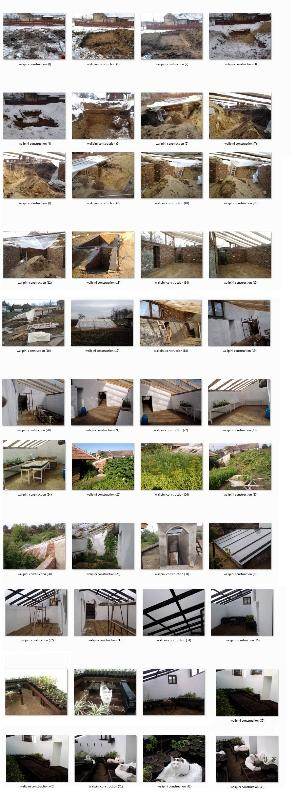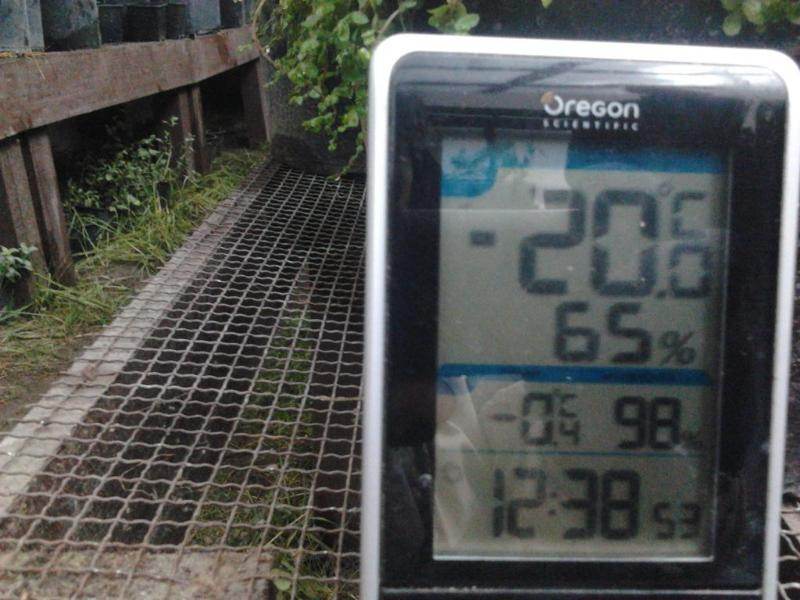@K9 I didn't come back and answer your question: "So what should the pitch angle be then?"
Bottom line: if your system is working then good for you, this is simply an attempt to explain the methodology I would have used so that a) I can be corrected if I am wrong and b) if I am correct then others can use it for their projects. Long post, but I hope it is useful for someone.....
The purpose is to have the glass at right angles to the sun’s rays at the time that is most useful to you - right angles ensures maximum penetration of the energy. Given that the purpose of the Walapini is to act as a greenhouse it is probable that the optimal time is in the spring and fall. Furthermore, setting the angle based on the highest angle of the sun on any given day at that time doesn’t make sense – better to optimize it for, say, 2 hours either side of that so the optimal position is hit twice. So, the angle we are trying to find is the sun angle on the day and time you nominate, for the location you desire. Note that the angle of the glass from the horizontal will be 90 degrees minus the sun angle (sun angle is the angle between the sun and the horizon)
[I think this basic process will also work for solar panels]
STEP 1: Find your latitude and longitude. The easiest tool is to go to
http://www.worldatlas.com/aatlas/findlatlong.htm
I don't know where you are in NW Romania so I used the town of Oradea as a proxy, and got 47.07N and 21.92E
STEP 2: Enter the information Go to
http://www.susdesign.com/sunangle/
a. Longitude and Latitude come from Step 1
b. Date (whatever date you choose for optimizing) – I chose March 1st (will also approximate to mid-October as well.)
c. Your time zone (Oradea is GMT +2)
d. Time basis - I use "solar time" so that if I enter 1200 as time it is the point where the sun is at its highest that day. You can see clock time anyway in the output section.
e. Time: I chose to enter 1000 so that there are 2 points in the day that are optimized, 2 hours each side of the highest point of the sun that day.
f. Daylight saving (yes or no)
End result of all those parameters is an angle of 29 degrees, and therefore the angle from horizontal for the glass would be 90 - 29 = 61 degrees. Note that the clock time shows 1144 vs solar time of 1000. That indicates that the sun is at its highest point in the early afternoon as you can see if you take the midpoint between sunrise and sunset. This is a user-supported site - if you make use of the data
please consider a contribution
STEP 3: Check your work

Go to
http://www.gaisma.com/en/dir/001-continent.html and drill down for the location you need, or the one closest to you.
Lucky us, we can find Oradea (and many others) listed for Romania. There is a lot of information there, and also explanations for all of the terms used. Information includes rainfall and temperature, but also more esoteric stuff like insolation, clearness, wind, wet days, etc, etc.
STEP 4: Implementation
Translating this optimal angle into a practical design has its issues. At a 61 degree angle the width of the Walapini is going to be constrained by the height you need to achieve the 61 degree angle. If you took the maximum height above grade as 10', then the width would be less than 6'. Obviously a lower angle allows greater width, at a sacrifice to efficiency when the sun is low.

 3
3







































 2
2




 1
1









 1
1
















 1
1
















 )
) 5
5

















 4
4




 3
3




 5
5




 6
6










